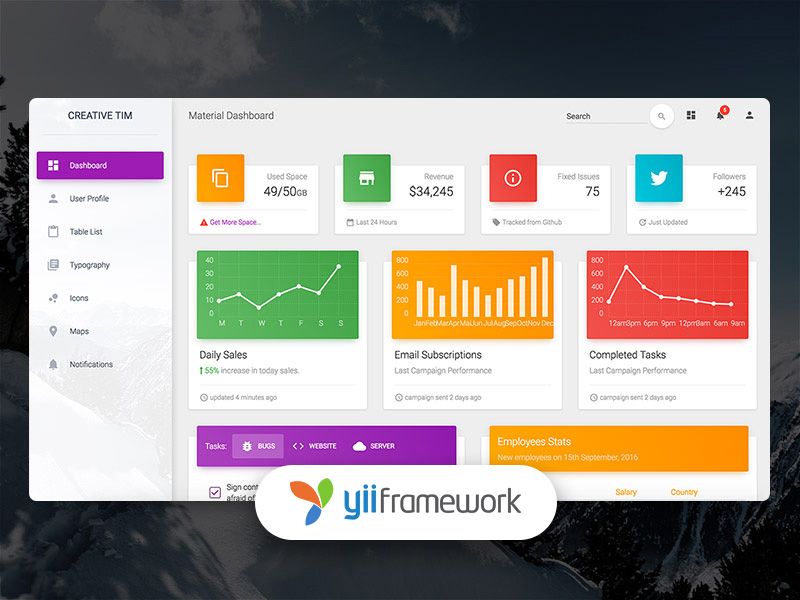Brand recognition and customer contact are the keys to the success of any business. Today, almost every industry is turning to business applications, whether it’s a small business, a start-up, or a well-established business.
In 2017, mobile app downloads reached 175 billion, and the combined revenues in app stores totaled $86 billion. Games seem to be the most popular category, but business apps definitely take a slice of the cake too. The mobile application development company has made the world a storm integrating advanced AI and virtual reality technology. So, many businesses are trying to leverage the potential through apps by mobile development technologies for serving their customers well enough and growing their overall revenue.
However, the major problem in the development of the mobile app is the high development cost which one has to incur in the initial stages, and it sets out to be extravagant most of the time. So, every entrepreneur is looking forward to the reduction of this cost by any means when you set up your business.
There are many ways to cut the cost of your mobile app development without compromising the quality of the app. Let’s have a deeper dive into the various factors that significantly influence mobile app development costs.
It’s All About the Requirements:
The first thing to do is to make sure you write clear and detailed requirements for your application development project. By writing a complete document, you can communicate clearly with a mobile app development company about your needs, which will save them time and effort.
Consider an example of a client who wanted to develop a particular application. Suppose, the client has a visible picture of his concept and shared the project requirements document than it’s effortless to understand it. In fact, it will not encounter any further challenges to a dedicated developer when developing an app.
Thus, if you do not prepare a requirements document, this will cause many changes in the application, which will result in increased development time and costs in the case of Outsourcing (will talk about it later) App Development as they charge according to an hourly basis. Make sure you group together your requirements and write them down in the document so that the development team or company gets a clear picture in mind.
Perform well-versed research:
While this may seem like an even longer waste of time, but the truth is that if you do proper research on similar applications, requirements, etc., you can save time by avoiding mistakes. If the developer is well enough to plan, avail with all detailed sketches, goals, and requirements, it will be easier to structure the work and finish it faster.
Keep it Simple:
You must analyze practically the features of your application and the real purpose of creating an app. If you do not need it, do not go! It’s that simple!
When we talk about the overall design of the app, you need to be pretty sure that it should not be cumbersome so that user participation becomes a challenge. So; on your side, you need to do a little analysis of the real needs of the users so that you can project big by little.
The design of the application must be simple but attractive to maximize the number of downloads. Keep UI/UX Simple – One of the strategies to reduce app development costs is to go for simple yet elegant designs. A simple UI design is essential, especially for new users since adaptation becomes easy.
MVP Releases:
MVP refers to the minimum viable product. In mobile application development, MVP is a basic version of an application. MVP is a process in which a new product, with essential features, is developed to test the reaction of the target audience. Then the real product, with a full set of features, is designed after receiving comments from the first users. In fact, CB Insights reported that 42% of businesses failed because there was no market need.
A great mobile app MVP contains the minimum features that address a core problem you are solving for a targeted set of users. Once you serve the needs of your core set of users, you can then begin to target other audiences.
Many massively successful apps that are prevalent today began with an understanding that they needed to validate their assumptions. Facebook, Instagram, and Uber are an example of massive successes they are today. All were beginning with a minimum viable product as they continually revisited their core value proposition, and in doing so, we’re able to focus on solving a core problem for the set of users that mattered most.
Cross-Platform App Development:
There are two approaches to creating apps in mobile development – native applications for each specific platform and cross-platform applications that are supported by all modern OS. The first option is the most expensive because it needs to write code separately for each operating system, so the second option is more suitable for saving the overall fund. And, for the application development, cross-platform application development is a cost-effective solution that is the liberal way for fast growth of the application at a lower cost.
Outsourcing:
Hiring dedicated developers and outsourcing the project to them remains a favorite cost-saving strategy (as talked earlier) of both large- and medium-scale enterprises.
Outsourcing will give you various options & you can choose the best suited for your project. You can either go for a fixed budget, or you can also go for an hourly basis payment model. If you compare this with the cost of hiring an in-house team of developers, it will cost you much less. You can’t ignore in-house expenses such as electricity bills, internet bills, and other utilities other than fixed salaries.
Mobile app development outsourcing will save money for you in the long run. Your project will be managed by experienced developers, and the overall quality will be superior. Another benefit of outsourcing your mobile app development project is you can explore developers around the world, regardless of location.
In addition to cost savings, the merit of this approach is access to the global talent pool, less overhead and increase focus on core business, making it one of the most favorite cost-saving strategies for both enterprises and start-ups.




